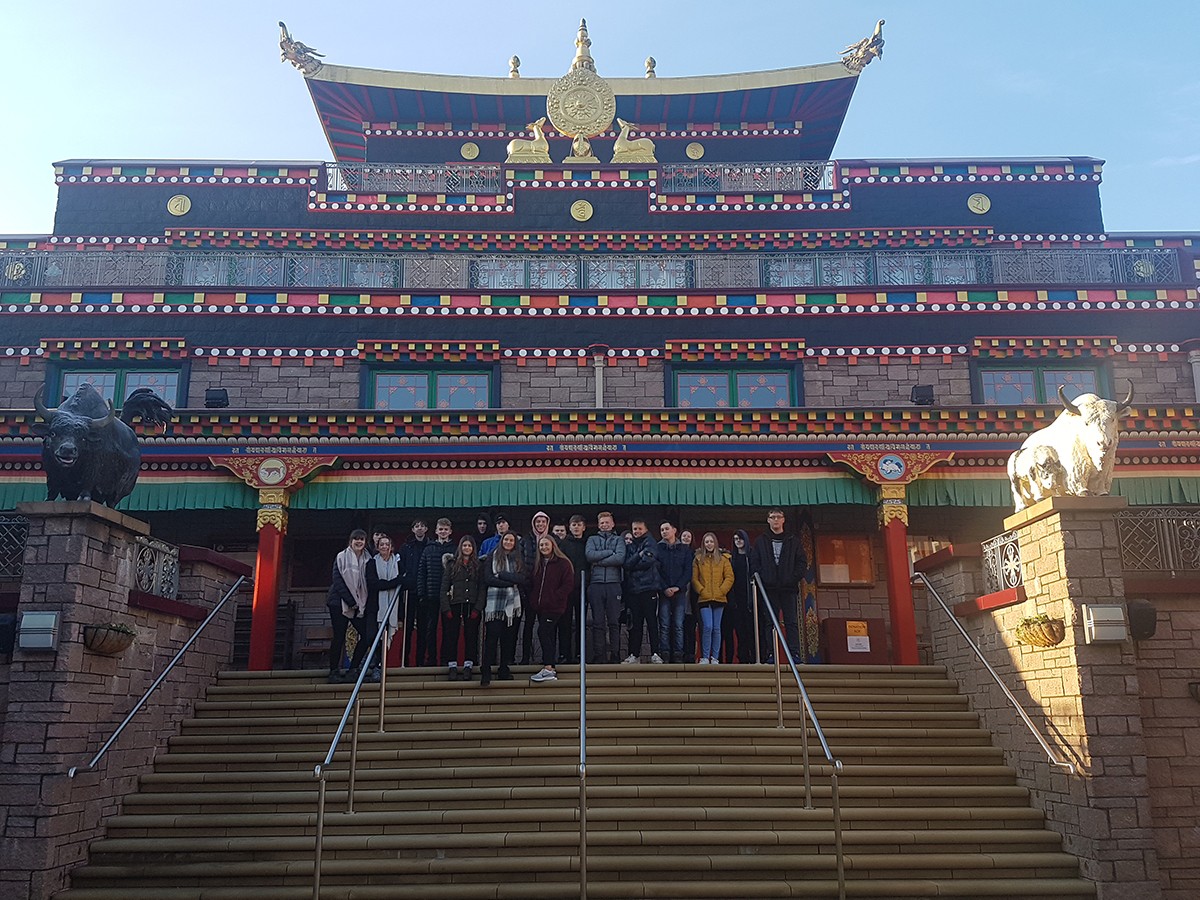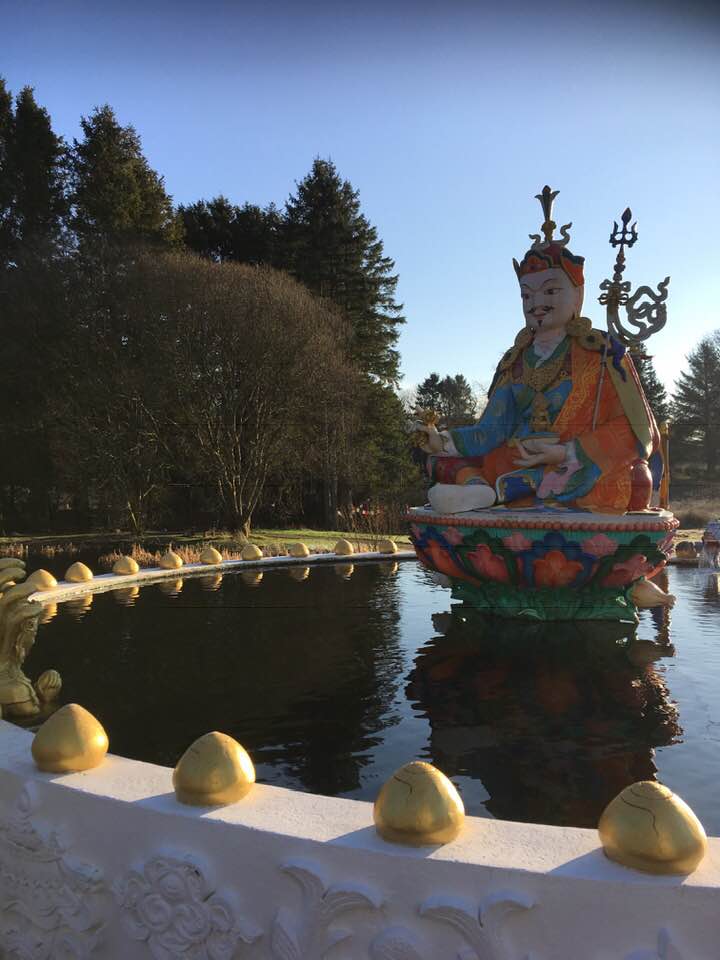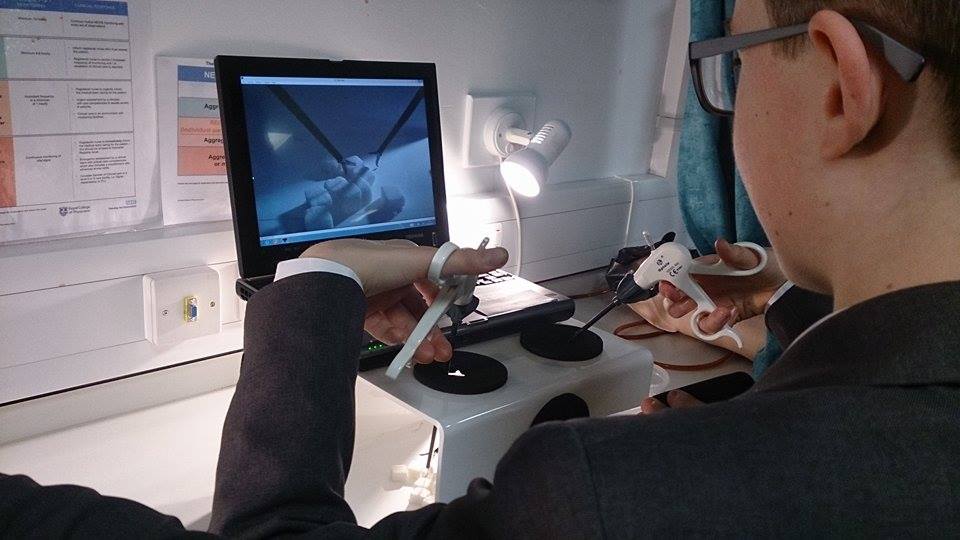On the 14th of December, Year 11 GCSE Religious Studies students and staff at Woodham Academy embarked on a fieldtrip to the largest Tibetan Buddhist Monastery in Europe – the Kagyu Samye Ling Monastery in Dumfriesshire, Scotland. The monastery is internationally known for the authenticity of its teachings and tradition, and offers instruction in Buddhist cosmology and meditation within the Karma Kagyu lineage of Tibetan Buddhism. It is also a centre for the preservation of Tibetan religion, culture, medicine, art, architecture and handicrafts. Founded in 1967 by two spiritual masters, Dr. Akong Tulku Rinpoche and Chogyam Trungpa Rinpoche, Samye Ling was the first Tibetan Buddhist Centre to be established in the West and was named after Samye, the very first monastery to be established in Tibet.
The journey began at dawn by coach and took students into Scotland via the scenic landscapes of County Durham, Cumbria, and Northumberland on a sunny yet icy day. Isolated in a beautiful natural location of Scotland amidst rolling hills and rushing waters, students were greeted by a friendly and serene Scottish nun who had taken her vows a decade ago. Upon arrival, students and staff were amazed with the location, architecture, and beauty of the monastery. Despite the lack of the soaring peaks of the Himalayas, the monastery was so genuine that it could have been in Tibet. The nun began the tour detailing the history and symbolism of various monuments of the monastery and how these relate to the cosmology and practices of Tibetan Buddhism. Students even witnessed an ageing Tibetan monk walking in circles around the monastery reciting mantras in pursuit of his own enlightenment. How close he is was a mystery to everyone.
Some of the highlights were the various shrines dotted about in gardens with statues of the Buddha and other Bodhisattvas, the prayer flags flapping in the soft but chilling wind, the magnificent stupa containing relics of the Buddha, and the prayer wheels to generate good karma for all humanity.
To seek refuge from the frosty weather, the group sat in the vegetarian dining hall to eat, relax, and warm up. Present were other guests and visitors, pilgrims – some sitting in absolute silence, others in jest – and the resident monks and nuns.
The truly remarkable experience, though, was the temple itself looming over the monastery with two great statues of yaks greeting visitors. The monks and nuns were kind enough to allow students to witness an ancient Tibetan Buddhist ritual consisting of the burning of incense, endless mantras and chanting, drumming, and praying in the ceremonial temple hall beneath the gaze of an enormous statue of the Buddha. The temple was of extraordinary beauty, with an array of statues and artefacts, countless scrolls, walls the colour of gold decorated with prayers in Tibetan, sacred symbols, and exquisite tapestries.
One of the nuns took the group into the adjacent meditation hall to discuss what Tibetan Buddhism meant for her, to answer any questions about Tibetan Buddhism and her own reasons for joining the monastery, and to teach the basics of samatha meditation. The students excelled in this, and were surprisingly able to remain in a strenuous cross-legged meditation posture for some time in deep silence. After an hour or so students were allowed to wander the scenic gardens of the monastery, visit the café, and explore the handicraft shop with all manner of religious objects, clothing, and books.
The group then returned to the main temple for an hour-long discussion with one of the senior monks, an entertaining South African lawyer who since taking his vows had become one of the monastery’s major international speakers and teacher. He spoke of his life as a monk and about the mission of the monastery. Students asked him various questions regarding Buddhist attitudes to religious, ethical, and social affairs, whereby he constantly challenged students to seek their own answers to their questions in a jovial manner.
Dr Damon Lycourinos, Head of Religious Studies, Woodham Academy, said, “As our time was coming to an end, upon walking back to the coach the nun privately told me that Woodham Academy’s students were the most polite, inquisitive, and respectful students she had ever encountered. Truly acknowledging that Kagyu Samye Ling Monastery is a place of worship and residence for a living religious tradition, all students strictly abided on their own accord to monastery’s code of conduct in terms of respect, behaviour, and self-presentation. The fieldtrip was a magnificent experience for students and staff alike, and hopefully next year’s Year 11 students will be able to proudly represent Woodham Academy visiting the Kagyu Samye Ling Monastery.”
Woodham Students Visit Buddhist Monastery












